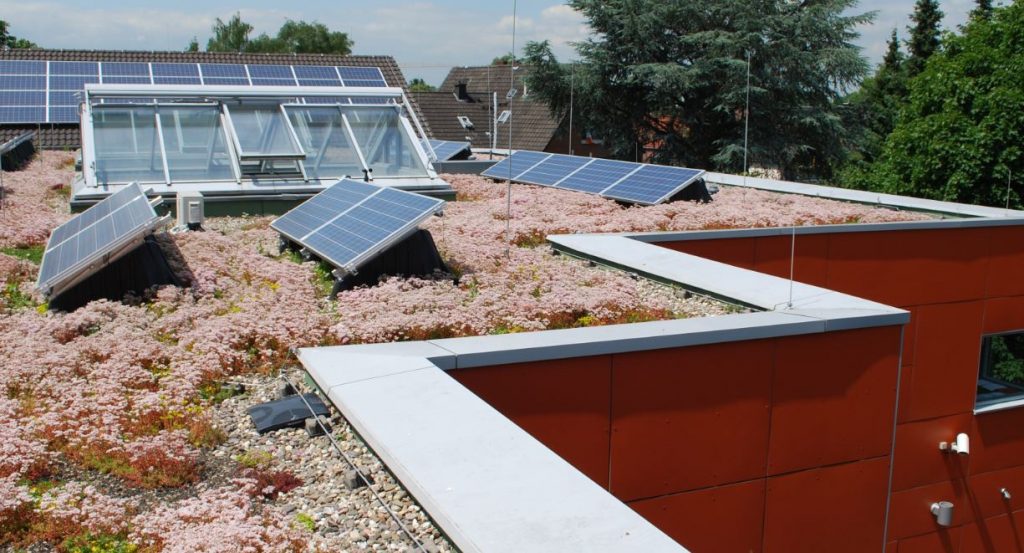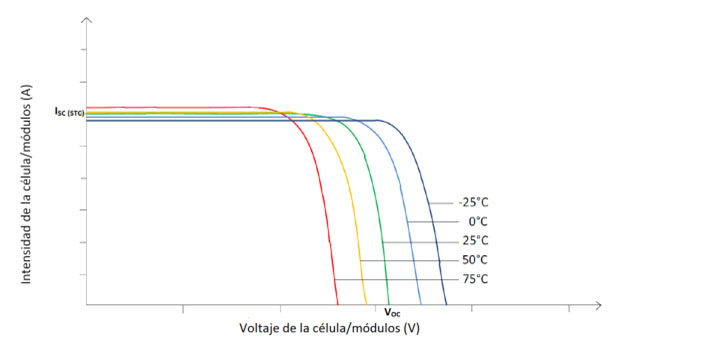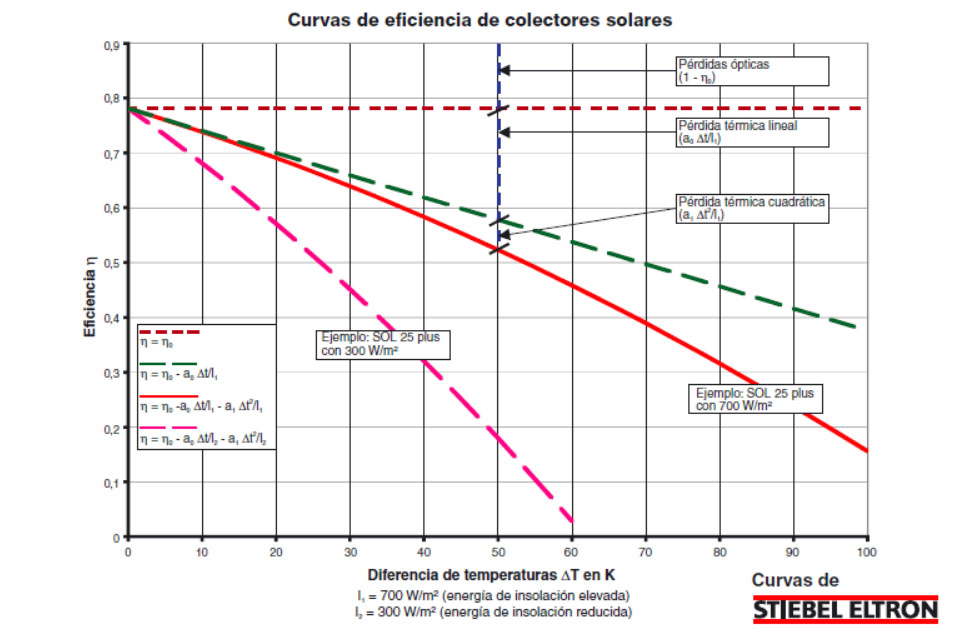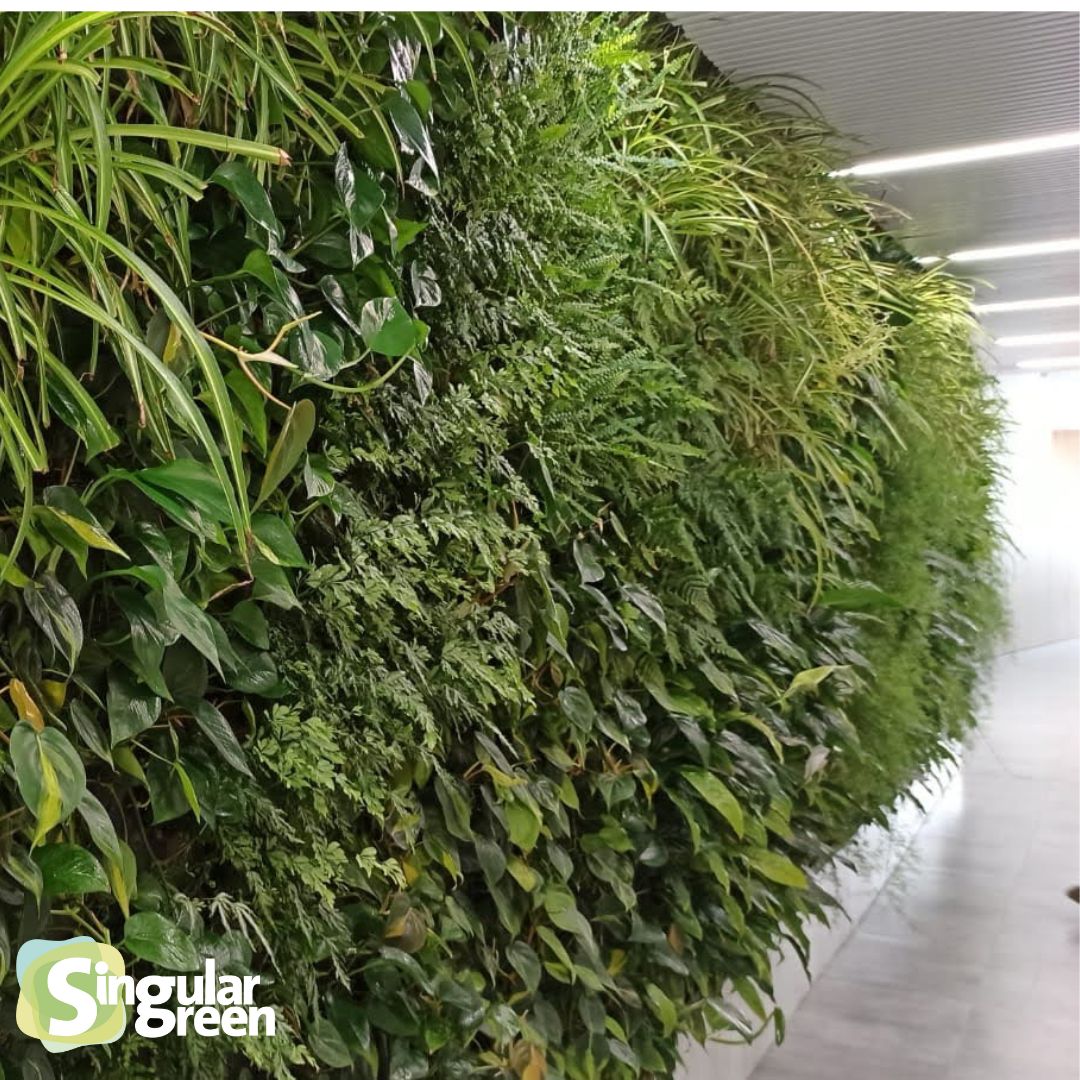In the current context of increasing integration of solar energy with green roofs, it is presented as an innovative and efficient solution.
This combination not only makes it possible to harness solar energy effectively, but also contributes to the improvement of the urban environment and the energy efficiency of buildings.
This article explores this synergy in depth, its benefits and challenges, and examples of its successful implementation.

Regulations and Requirements for the Installation of Solar Panels
With the current regulations in many countries, the installation of solar panels on the roofs of buildings is mandatory, depending on different requirements.
These regulations aim to encourage the use of renewable energy and reduce the carbon footprint.
Regulations vary by region, but generally set standards for energy generation capacity, orientation of panels and integration with other sustainable solutions, such as green roofs.
Types of Solar Panels and How They Work
The first question that arises when considering the integration of solar energy into green roofs is the compatibility of the two systems.
To resolve these questions, it is essential to differentiate between the types of solar panels available on the market: photovoltaic panels and solar collectors.
Photovoltaic panels
Photovoltaic solar panels consist of photovoltaic cells that convert the sun’s light energy into electrical energy.
These cells are composed of two layers of semiconductor materials, with opposite charges that generate an electric current when excited by sunlight.
It is important to know that a lower ambient temperature benefits the higher electricity production as we will see below:

This graph, taken from the Ingelibre website, shows that the voltage of the cell decreases as its temperature increases. In the case of the intensity, when the temperature increases, its value also increases, but to a lesser extent, so if we use the formula P=V x I, we will see that the higher the temperature of the cell, the lower the power obtained.
If we transfer this data to roofs, where these devices are mainly located, we know that one of the benefits of green roofs is that the surface temperatures are lower than those of a conventional roof, reaching around 25ºC on hot summer days compared to the 70ºC that can be reached in other types of roofs.
This is thanks to two capabilities:
- They cool the air on their surface in a process known as transpiration, where the plant absorbs humidity from the earth and expels it in the form of water vapour.
- They have a solar radiation reflection percentage of 25% compared to the 8% that conventional roof finishes usually have.
Solar collectors
Solar collectors, also known as solar collectors, transform solar energy into thermal energy.
This process is carried out by means of a heat transfer fluid that circulates inside the collector, absorbing the solar heat and then transferring it to the water for consumption through a heat exchanger.
We will now focus on the performance of a solar panel through the technical data sheets provided by a commercial company , Salvador Escoda:

As can be seen in the table, the Y axis represents the efficiency coefficient while the X axis represents the temperature difference between the average temperature of the heat transfer fluid and the ambient temperature of the air in contact with the collector.
The greater the difference, the lower the efficiency, so if we consider that the temperature of the fluid is 80oC, it will be beneficial for the system if the outside temperature is as close as possible to this value and therefore the difference is smaller.
Benefits of Green Roofs on Solar Panel Efficiency
Green roofs offer several benefits that can improve the performance of solar panels, especially photovoltaic panels.
The ability of plants to cool their surface air through transpiration and reflect solar radiation helps to maintain lower temperatures on the roof surface.
In the words of SingularGreen, ‘the surface temperatures are lower than those of a conventional roof, reaching around 25ºC on hot summer days compared to the 70ºC that can be reached in the rest of the typologies’.
Temperature Reduction and Energy Efficiency
Reducing the temperature of green roofs can improve the performance of PV panels, as PV cells operate more efficiently at lower temperatures.
According to data, a lower ambient temperature can increase the performance of PV panels by 0.3 – 0.5% for every degree lower temperature.
Savings in Air Conditioning and Energy Demand
In addition to improving the performance of PV panels, green roofs offer benefits in terms of energy savings. The insulating properties of green roofs reduce the demand for air conditioning in buildings, resulting in lower energy consumption and therefore significant financial savings.
Challenges of Integrating Solar Panels with Green Roofs
Despite the benefits, the integration of solar panels with green roofs presents certain challenges that must be considered to ensure optimal performance.
Impact on Solar Collector Performance
Unlike photovoltaic panels, solar collectors require the heat transfer fluid to reach high temperatures to be effective.
The ability of green roofs to reduce the surface temperature may not be beneficial for these devices, as lower ambient temperatures can decrease the heating efficiency of the fluid.
Compatibility and maintenance of solar energy and green roofs
Compatibility between solar systems and green roofs depends on proper design and installation.
It is crucial to ensure that both systems are compatible and that maintenance of one does not adversely affect the other.
In addition, it is necessary to consider the additional weight that solar panels may add to the green roof structure.
Case Studies and Examples of Successful Projects
Numerous projects around the world have demonstrated the feasibility and benefits of integrating solar energy with green roofs.
For example, in several buildings in Germany and the Netherlands, the combination of solar panels with green roofs has resulted in significant improvements in energy efficiency and reduced carbon footprint.
Conclusion: Future of Solar Energy on Green Roofs
The combination of solar energy and green roofs represents an innovative and sustainable solution for the future of urban construction.
Although there are challenges, the benefits in terms of energy efficiency, sustainability and economic savings make this combination an attractive option for many projects.
With proper design and careful implementation, the synergy between solar panels and green roofs can contribute significantly to a greener and more efficient future.







